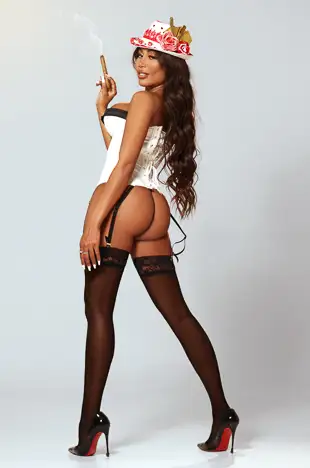|population_ref = ( and wards ) |charingX_distance_mi = 16.5 |charingX_direction = WSW |static_image_name = Upminster 021.jpg |static_image_caption = Church of St Laurence, Upminster
History
Toponymy
{| class="wikitable" align="right" style=font-size:85%;margin-left:10px;
|+'''Upminster (parish) population'''
|-
!align="center"| 1881
|align="center"| 1,202
|-
!align="center"| 1891
|align="center"| 1,409
|-
!align="center"| 1901
|align="center"| 1,477
|-
!align="center"| 1911
|align="center"| 2,468
|-
!align="center"| 1921
|align="center"| 3,559
|-
!align="center"| 1931
|align="center"| 5,732
|-
!align="center"| 1941
|align="center"| war #
|-
!align="center"| 1951
|align="center"| 13,038
|-
|style="font-size:smaller" colspan=2|# no census was held due to war
|-
|style="font-size:smaller" colspan=2 align=center|source: Census#United Kingdom
|}
The placename Upminster is first recorded in 1062 as ''Upmynstre'' and is recorded in the 1086 Domesday Book as ''Upmunstra''. It is formed from Old English ''upp'' and ''mynster'', meaning the large church on high ground. The high ground of the Church of St Laurence, Upminster being in relation to the valley of the River Ingrebourne and the Upminster Bridge over the river shares the name. An alternative explanation suggests the ''upp'' could refer to the geographical relationship to a church at Barking or Tilbury in Anglo-Saxon times (cf. Southminster and Bradwell-juxta-Mare). The lower two storeys of the church tower may be older than the 13th century date that Pevsner gave to the timber above.
Economic development
There was an ancient farmstead from the 1st century to the 3rd century in the Upminster area, and agriculture was the predominant industry throughout the following centuries. The area was once wooded, but clearances in the 12th century gave more land over to arable farming; and by the 17th century there were a variety of crops and livestock. There was a growth in market gardening in the 19th century. There have been a number of List of windmills in London#T - W and one of which, a smock mill built in 1803, remains. Local industry included a tannery, gravel extraction and a brick works that was connected to the railway station by a tramway in 1895.
The London, Tilbury and Southend Railway from Fenchurch Street railway station was extended from Barking to Upminster station in 1885. The underground Whitechapel and Bow Railway opened in 1902 and allowed through services of the Metropolitan District Railway to operate to Upminster. The Metropolitan District converted to electric trains in 1905 and services were cut back to East Ham. Delayed by World War I, electrified tracks were extended by the London, Midland and Scottish Railway to Upminster and through services resumed in 1932.
Local government
, adjoining Great Warley (3), Cranham (5) and Rainham (6)]]
Upminster formed an ancient parish of in the Chafford (hundred) hundred of Essex. The Administrative vestry had meetings in the church until 1798, when they moved to the Bell Inn. The parish was divided into North and South wards by the Hornchurch to Cranham road. In 1836 the vestry lost control of poor relief, with Upminster becoming part of the Romford Poor Law Union and in 1875 the parish became part of Romford sanitary district. Following the Local Government Act 1894, the sanitary district became Romford Rural District and a parish council was formed of nine members, increasing to twelve by 1913 as the population had doubled. The parish council acquired the Clock House building on St Mary's Lane for use as offices in 1924. The parish formed part of the London Traffic Area from 1924 and the London Passenger Transport Board from 1933. In 1934 the parish council was abolished and Upminster was combined with other parishes to form part of Hornchurch Urban District. In 1965 the urban district was abolished and its former area was combined with that of Municipal Borough of Romford; and since then has formed part of the London Borough of Havering in Greater London.
Urban development
The parish had three early centres of activity; the village around the church and the settlements of Hacton and Corbets Tey. The estates of Gaynes, New Place and Upminster Hall were purchased during the 17th century by merchants in the City of London. This caused a significant number of buildings in the town to be constructed or improved. Upkeep of the three bridges crossing the Ingrebourne were the responsibility of Upminster, as the adjacent Hornchurch parish was in the Royal Liberty of Havering and was exempt from responsibility because of its charter. Although the opening of the station was key to the development of the suburb, land was not purchased for development until were secured in 1901.
Electricity was introduced in Upminster in 1926. Gas main supply came from Romford in 1872 and from 1905 there was gas street lighting. The area was served by good spring water, with mains supply provided by the South Essex Waterworks Company from 1836. Works on the sewerage system began in 1899 in Upminster village and Corbets Tey. In 1922 sewage works for Upminster and Cranham were opened in Great Warley. Land for Upminster Park was purchased by the parish council in 1929. |population_ref = ( and wards ) |charingX_distance_mi = 16.5 |charingX_direction = WSW |static_image_name = Upminster 021.jpg |static_image_caption = Church of St Laurence, Upminster
Governance
The town forms part of the Hornchurch and Upminster (UK Parliament constituency), and is covered by the Havering wards of Upminster and Cranham. The current MP is Angela Watkinson. Each ward elects three councillors to Havering London Borough Council. All six councillors elected in 2010 for the two wards were the Upminster and Cranham Residents' Association candidates and the area is unusual in that the residents' association is strongly active. From 1945 to 1974 Upminster formed part of the Hornchurch (UK Parliament constituency) and from 1974 to 2010 it formed part of the Upminster (UK Parliament constituency). Upminster is within the Havering and Redbridge (London Assembly constituency) and the London (European Parliament constituency). |population_ref = ( and wards ) |charingX_distance_mi = 16.5 |charingX_direction = WSW |static_image_name = Upminster 021.jpg |static_image_caption = Church of St Laurence, Upminster
Geography
Upminster rises to about above sea level to the north and is about above sea level to the south. It rests on a layer of loam, above sand and gravel in the south and London Clay to the north. It is bounded in the west by the River Ingrebourne and there is a stream running east-west, just north of Corbets Tey that has been dammed to form a lake. It has formed part of the continuously built-up area of London since the 1930s and is contiguous with Cranham to the east and Hornchurch to the west. To the north and south there is open land that forms part of the Metropolitan Green Belt and there are Havering parks and open spaces formed by Upminster Golf Club and Upminster Hall Playing Field to the north, Upminster Park and Clock House Gardens to the south, and the Ingrebourne Valley linear park to the south west. The town is effectively divided into north and south parts by the railway line. The north is predominantly residential, with the southern part containing the main shopping area. Further south it becomes predominantly residential again. Upminster is a post town in the RM postcode area; it forms a long protrusion over the M25 motorway and additionally includes North Ockendon, also in Havering, and Bulphan in Thurrock. Climate data for Upminster is taken from the nearest weather station at Greenwich, around southwest of St Lawrence church: |population_ref = ( and wards ) |charingX_distance_mi = 16.5 |charingX_direction = WSW |static_image_name = Upminster 021.jpg |static_image_caption = Church of St Laurence, Upminster
Demography
{| class="wikitable" align="right" style=font-size:85%;margin-left:10px;
! colspan="6" |Upminster compared (2001 Census)
|-
! Statistic || Upminster || Cranham || Havering || London || England
|-
! colspan="6" | Ethnic group
|-
| White
| 12,354 || 11,930 || 213,421 || 5,103,203 || 44,679,361
|-
| Asian
| 133 || 120 || 4,088 || 866,693 || 2,248,289
|-
| Black
| 59 || 64 || 3,139 || 782,849 ||1,132,508
|-
| Mixed
| 87 || 78 || 2,298 || 226,111 || 643,373
|-
| Chinese/Other
| 41 || 19 || 827 || 70,928 || 231,424
|-
! colspan="6" | Population
|-
| '''Total'''
| '''12,674'''|| '''12,242''' || '''224,248''' || '''7,172,091''' || '''49,138,831'''
|-
| Density(/hectare)
| 5.62 || 18.67 || 19.97 || 45.62 || 3.77
|-
| Households
| 4,946 || 5,111 || 91,722 || 3,015,997 || 20,451,427
|}
The Havering committee area for Upminster is defined as the wards of Upminster and Cranham. Demographic data is produced by the Office for National Statistics for these wards. All of Upminster is contained within these wards, however they also cover the connected settlement of Cranham and the rural outlier of North Ockendon. In 2001 the population of Upminster ward was 12,674 and Cranham ward was 12,242, giving a total population of 25,098. 80.95% in Upminster and 81.73% in Cranham report their religion as Christian, compared to 76.13% for Havering, 58.23% in London and 71.74% in England. 10.08% in Upminster and 10.46% in Cranham report having no religion, compared to 13.18% in Havering, 15.76% in London and 14.59% in England. With a Classification of ethnicity in the United Kingdom population of 3% in 2001, Cranham and Upminster wards have the lowest Simpson index for ethnic diversity in London. The level of Owner-occupier is atypically high compared to the rest of London and England, with over 90% of housing tenure under owner-occupation in both wards. |population_ref = ( and wards ) |charingX_distance_mi = 16.5 |charingX_direction = WSW |static_image_name = Upminster 021.jpg |static_image_caption = Church of St Laurence, Upminster
Economy
Upminster is identified in the London Plan as a local district centre with of commercial floorspace. It is not considered a significant commercial office location. Within Havering, it is identified as one of seven town centres in the borough, with a retail area extending along Station Road, St Mary's Lane and Corbets Tey Road. The unit sizes are mostly small with the largest outlets the Roomes Fashion and Home department store, the Roomes Furniture and Interiors furniture store, and the Aldi, M&S Simply Food and Waitrose supermarkets. |population_ref = ( and wards ) |charingX_distance_mi = 16.5 |charingX_direction = WSW |static_image_name = Upminster 021.jpg |static_image_caption = Church of St Laurence, Upminster
Transport
The town is served by Upminster station on the London, Tilbury and Southend Railway and the London Underground, in List of stations in London fare zone 6. The western part of the town is also served by Upminster Bridge tube station. Upminster and Upminster Bridge are on the District line of the London Underground, with services to Richmond, London, Ealing Broadway and Wimbledon, London via central London. The station at Upminster is served by National Rail operators c2c and Greater Anglia, with services to Fenchurch Street railway station via West Ham; Shoeburyness via Basildon; Southend via Chafford Hundred; and Romford via Emerson Park. There are Transport for London bus services to Hornchurch, Romford, North Ockendon, Lakeside Shopping Centre and Cranham. To the south of Upminster is Damyns Hall Aerodrome. The A127 road to the north is the main radial artery to central London, with the A124 road terminating in the town. The M25 motorway is located about to the east of the town centre. |population_ref = ( and wards ) |charingX_distance_mi = 16.5 |charingX_direction = WSW |static_image_name = Upminster 021.jpg |static_image_caption = Church of St Laurence, Upminster
Culture
Havering Council's urban strategy recognises that nearby Hornchurch is the main cultural hub of the borough with a large theatre and arts spaces, and Romford offers the largest regional concentration of entertainment facilities. Within Upminster is New Windmill Hall, a flexible entertainment space, built in 1968, which holds up to 300 people. Upminster forms part of the tourism strategy for the borough. It is the location of Upminster Windmill, one of the few remaining List of windmills in London and is listed building. There is also the Upminster Tithe Barn Museum of Nostalgia, containing artifacts of domestic and agricultural use. In the west of Upminster is Hornchurch Stadium, which is the home ground of A.F.C. Hornchurch. Upminster is often associated with Ian Dury and his 1981 album ''Lord Upminster'' is named after the town.
Speed of sound
The speed of sound was first accurately calculated by the Reverend William Derham, Rector (ecclesiastical) of Upminster, thus improving on Newton's estimates. Derham used a telescope from the tower of the church of St Laurence, Upminster to observe the flash of a distant shotgun being fired, and then measured the time until he heard the gunshot with a half second pendulum. Measurements were made of gunshots from a number of local landmarks, including North Ockendon church. The distance was known by triangulation, and thus the speed that the sound had travelled could be calculated. |population_ref = ( and wards ) |charingX_distance_mi = 16.5 |charingX_direction = WSW |static_image_name = Upminster 021.jpg |static_image_caption = Church of St Laurence, Upminster
See also
*List of people from Havering
*List of schools in Havering |population_ref = ( and wards ) |charingX_distance_mi = 16.5 |charingX_direction = WSW |static_image_name = Upminster 021.jpg |static_image_caption = Church of St Laurence, Upminster
References
|population_ref = ( and wards ) |charingX_distance_mi = 16.5 |charingX_direction = WSW |static_image_name = Upminster 021.jpg |static_image_caption = Church of St Laurence, Upminster
External links
*[http://www.havering.gov.uk/index.aspx?articleid=7999 Havering London Borough Council: A history of Upminster]
*[http://www.upminstercommunity.com Upminster Info - local information and events.]
Category:Areas of London
Category:Districts of Havering
Category:Districts of London listed in the Domesday Book
Category:Post towns in the RM postcode area






































































































































































